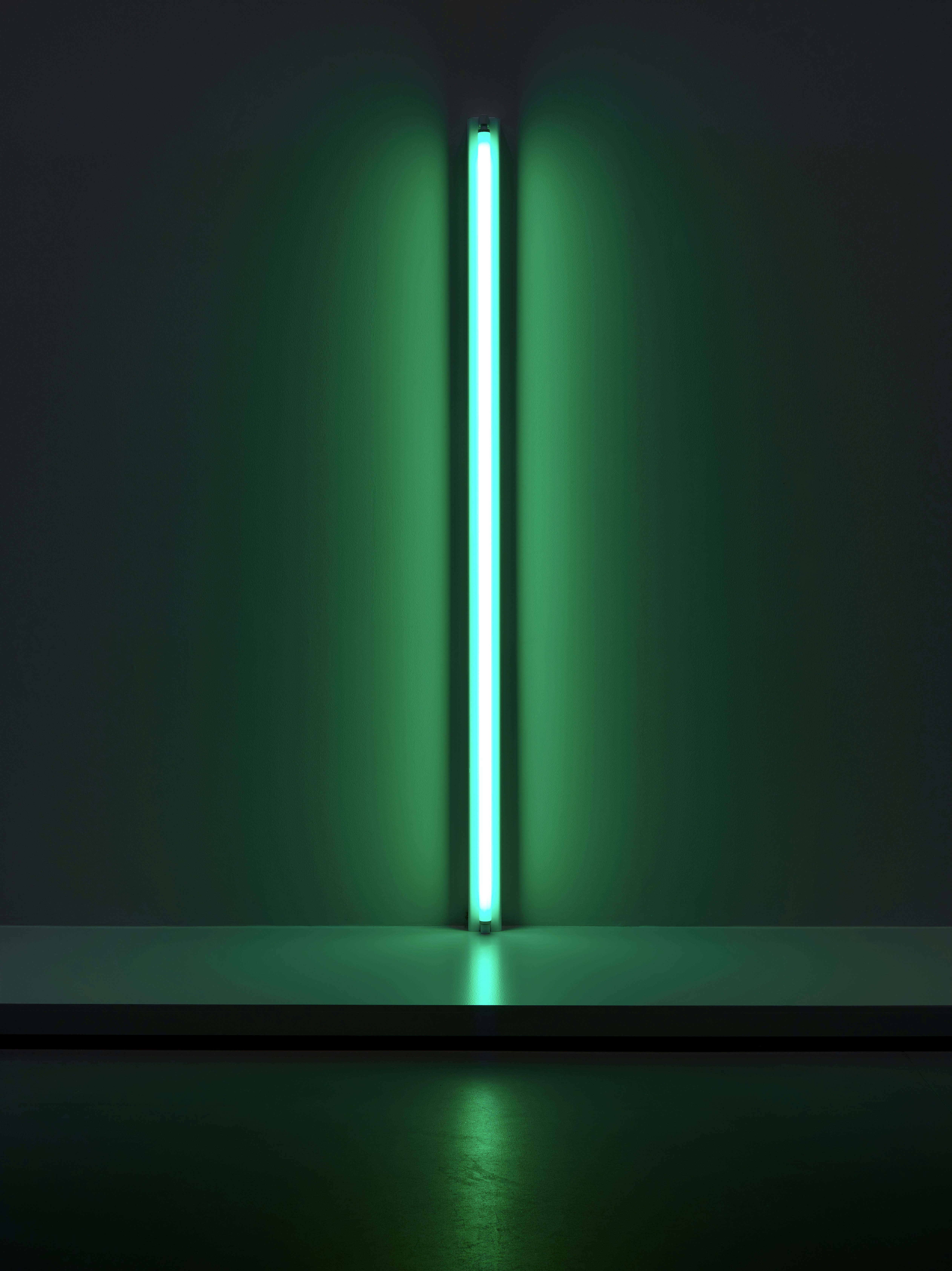Dan Flavin
In 1963, Dan Flavin began working with the medium of light: functional fluorescent tubes exhibited in their original state, without alteration or decoration.
Flavin took drawing and painting classes at Columbia University and discovered the work of Robert Motherwell, Jackson Pollock and Jasper Johns. Between 1961 and 1963, he used lighting in his series Icons, comprising square structures with incandescent and fluorescent bulbs attached to their sides.
On 25 May 1963, he placed a 244-cm gold-coloured fluorescent light on the wall of his workshop at a 45-degree angle. Titled the "Diagonal of Personal Ecstasy (the Diagonal of May 25, 1963)”, it represented the moment of “epiphany” in his career.
Dan Flavin became one of the representatives of minimalist art alongside Donald Judd, Sol LeWitt and Carl Andre, and took part in the movement’s seminal shows of the 1960s: Black, White and Grey (Wadsworth Museum, Hartford) in 1964, and Primary Structures (Jewish Museum, New York) in 1966.
His work favours the repetition of elementary forms and the rejection of representation, illusionism and metaphor. Its only reference is to reality, context, and the spectator’s perception. Flavin’s first solo show, which featured only fluorescent tubes, was held at the Green Gallery in New York in 1964. It was a chance for the artist to experiment in situa with the way light alters the physical perception of a space.
Starting with his series Monuments for V. Tatlinn (1964-1990), the fluorescent tube became an element of construction, allowing the artist to scale up the proportions, combinations and dimensions of his installations. During the 1970s, Flavin worked in increasingly monumental settings, and created many site-specific installations, some temporary.
















